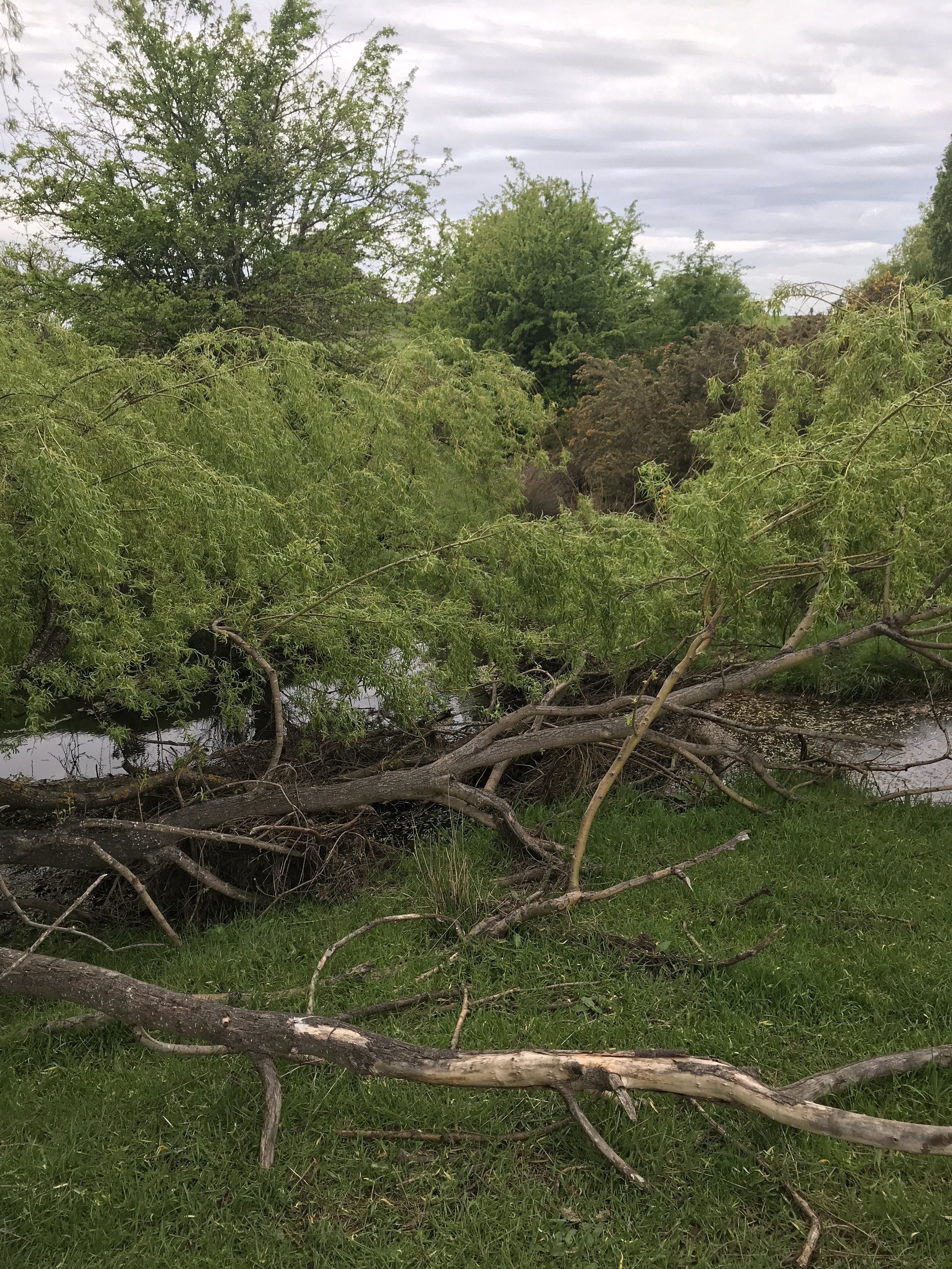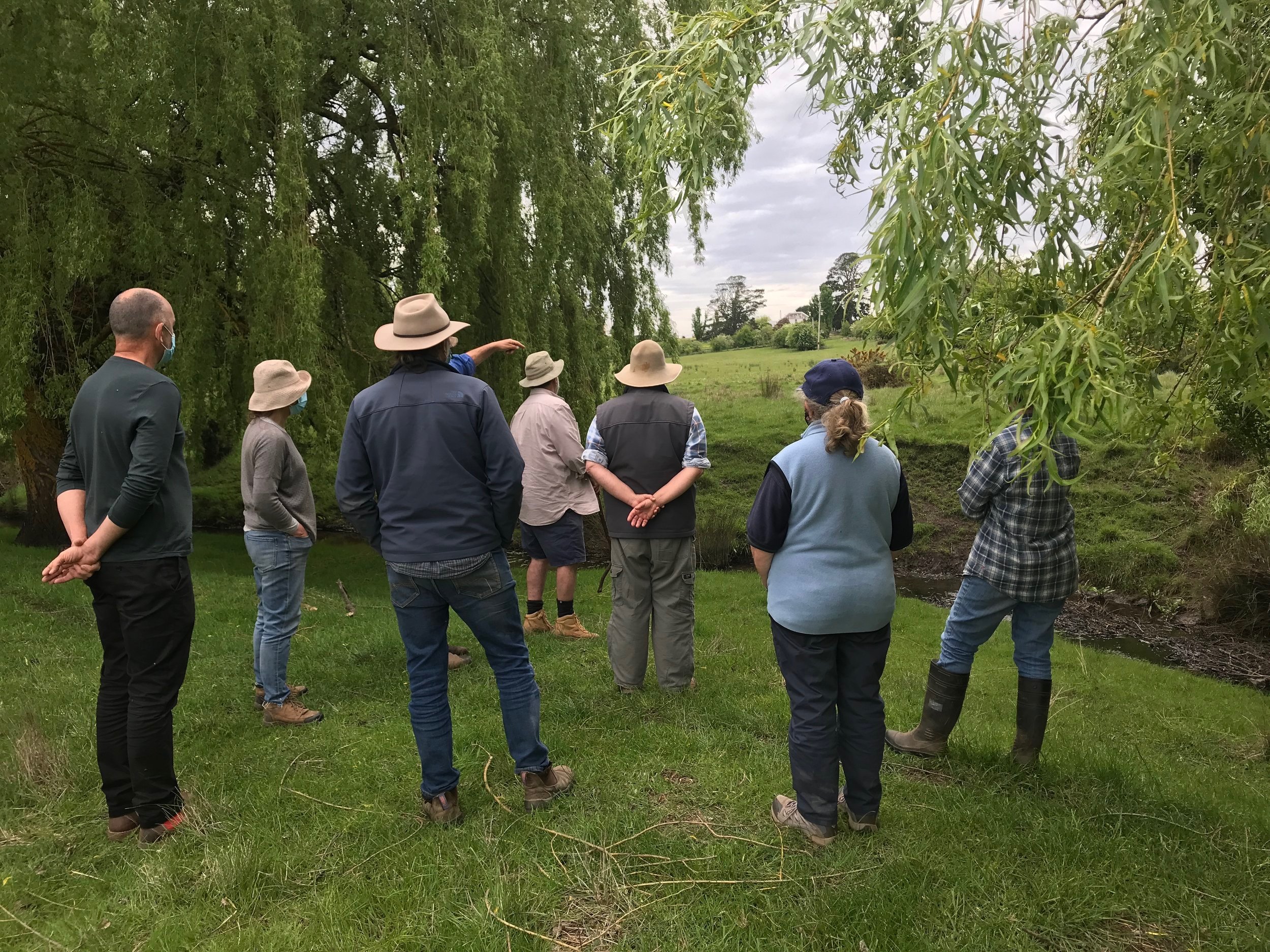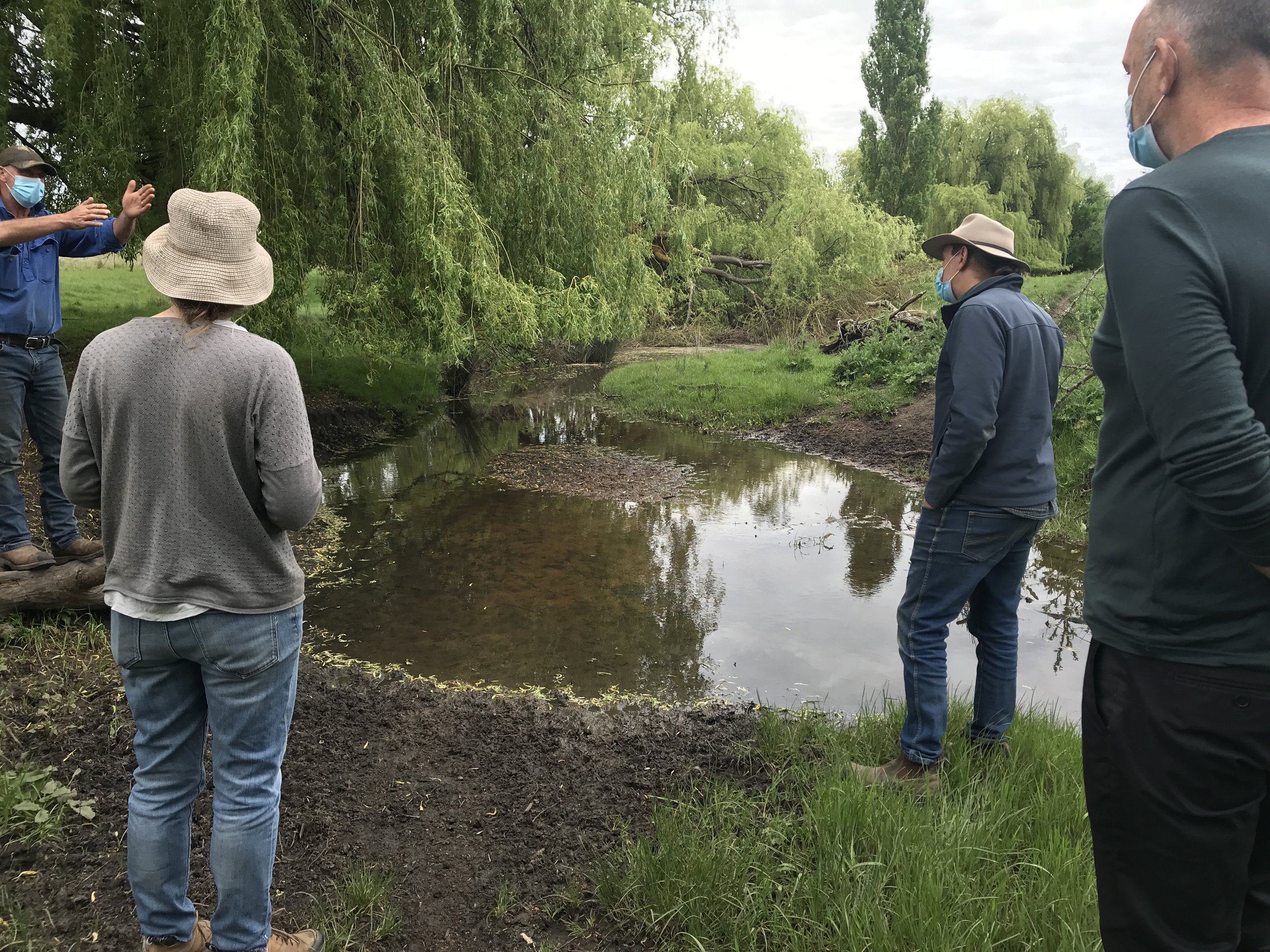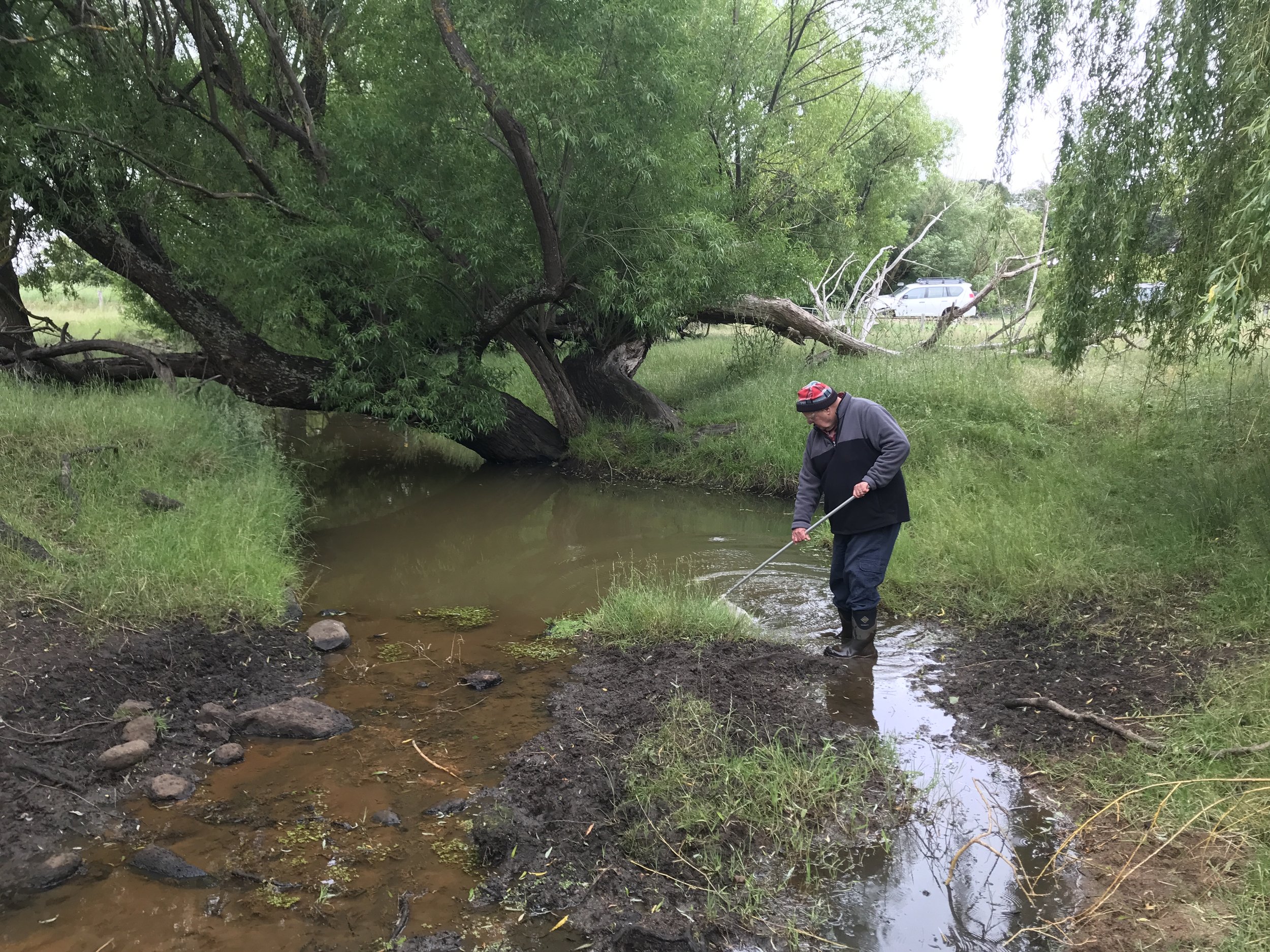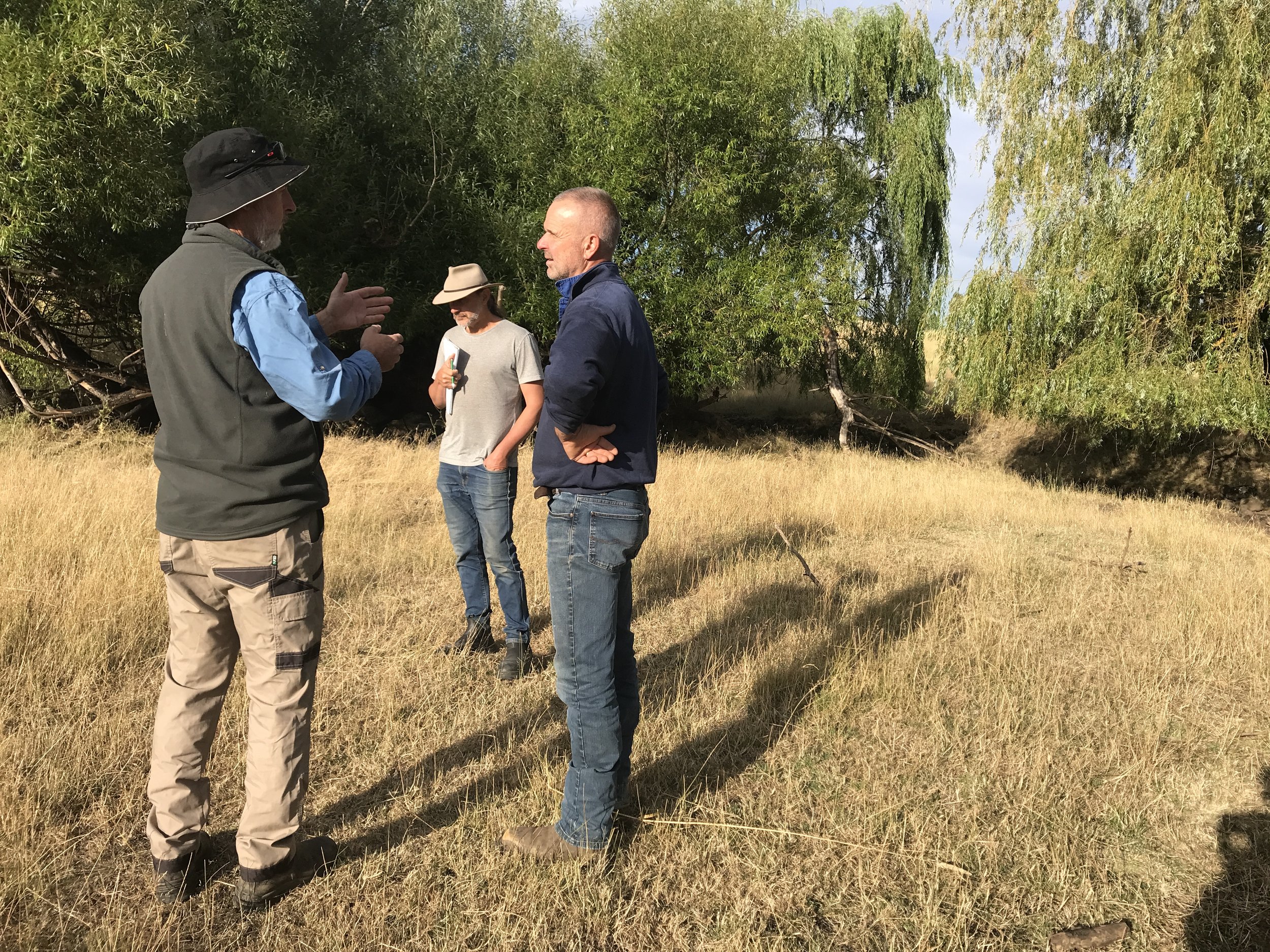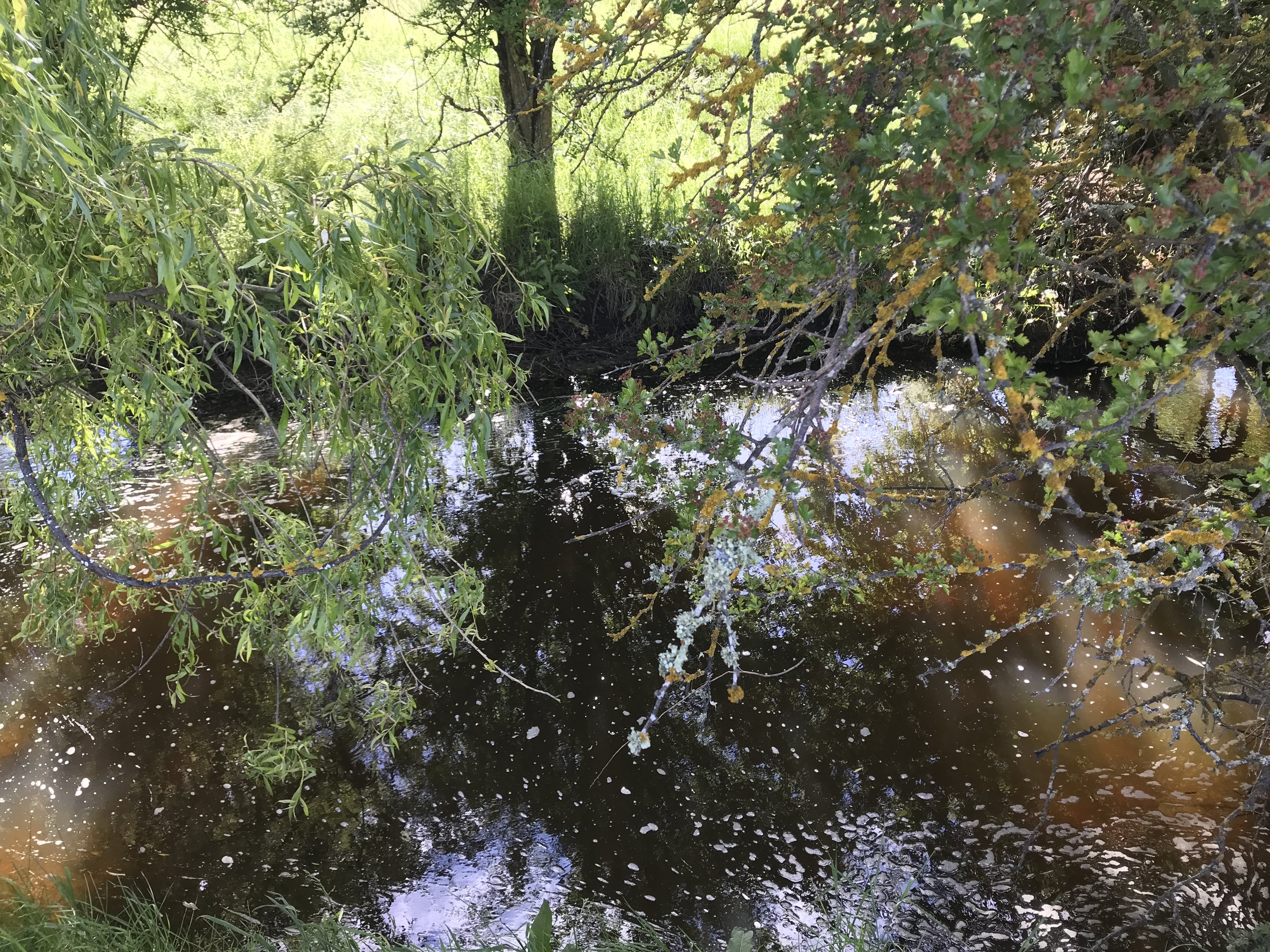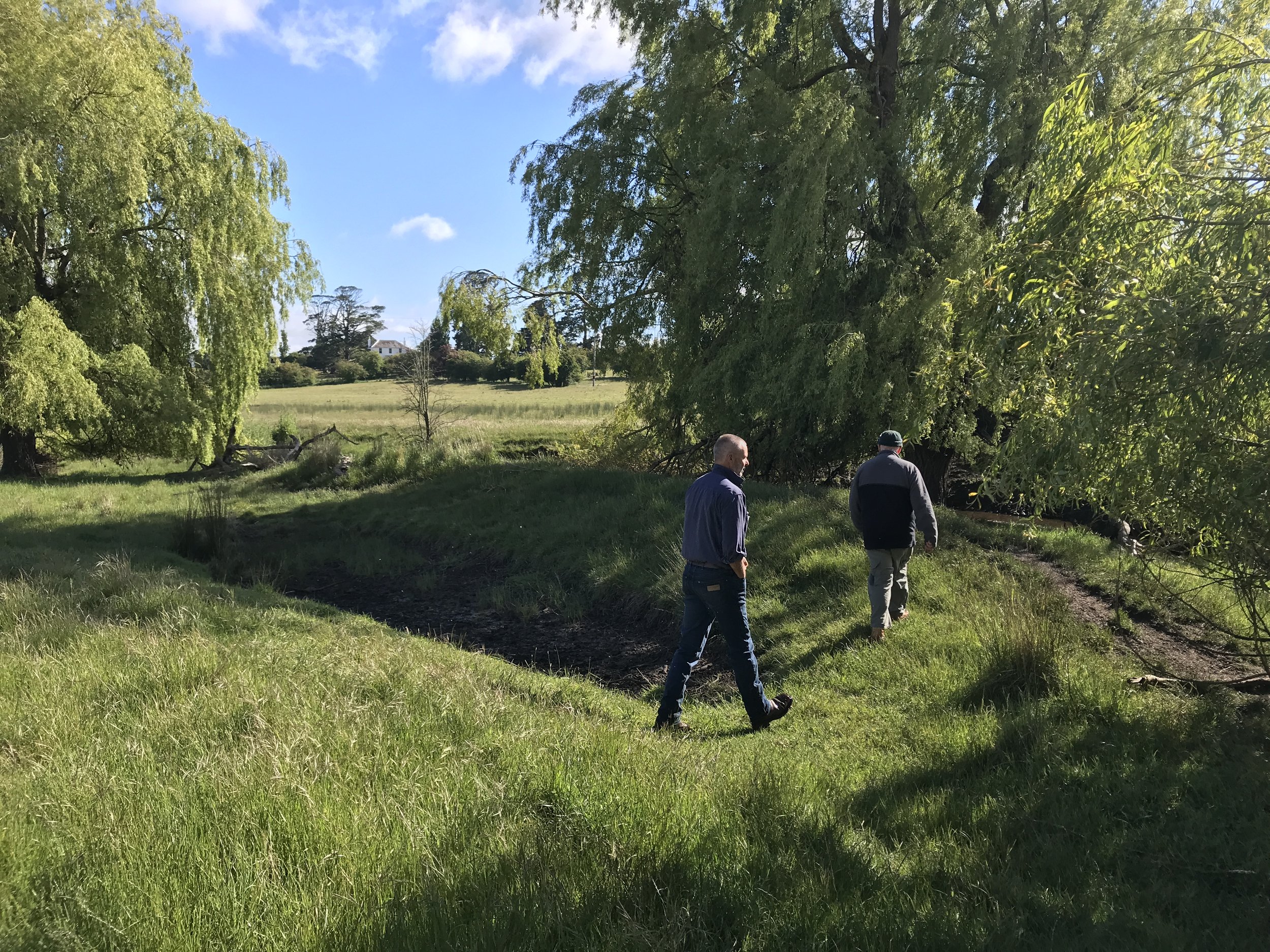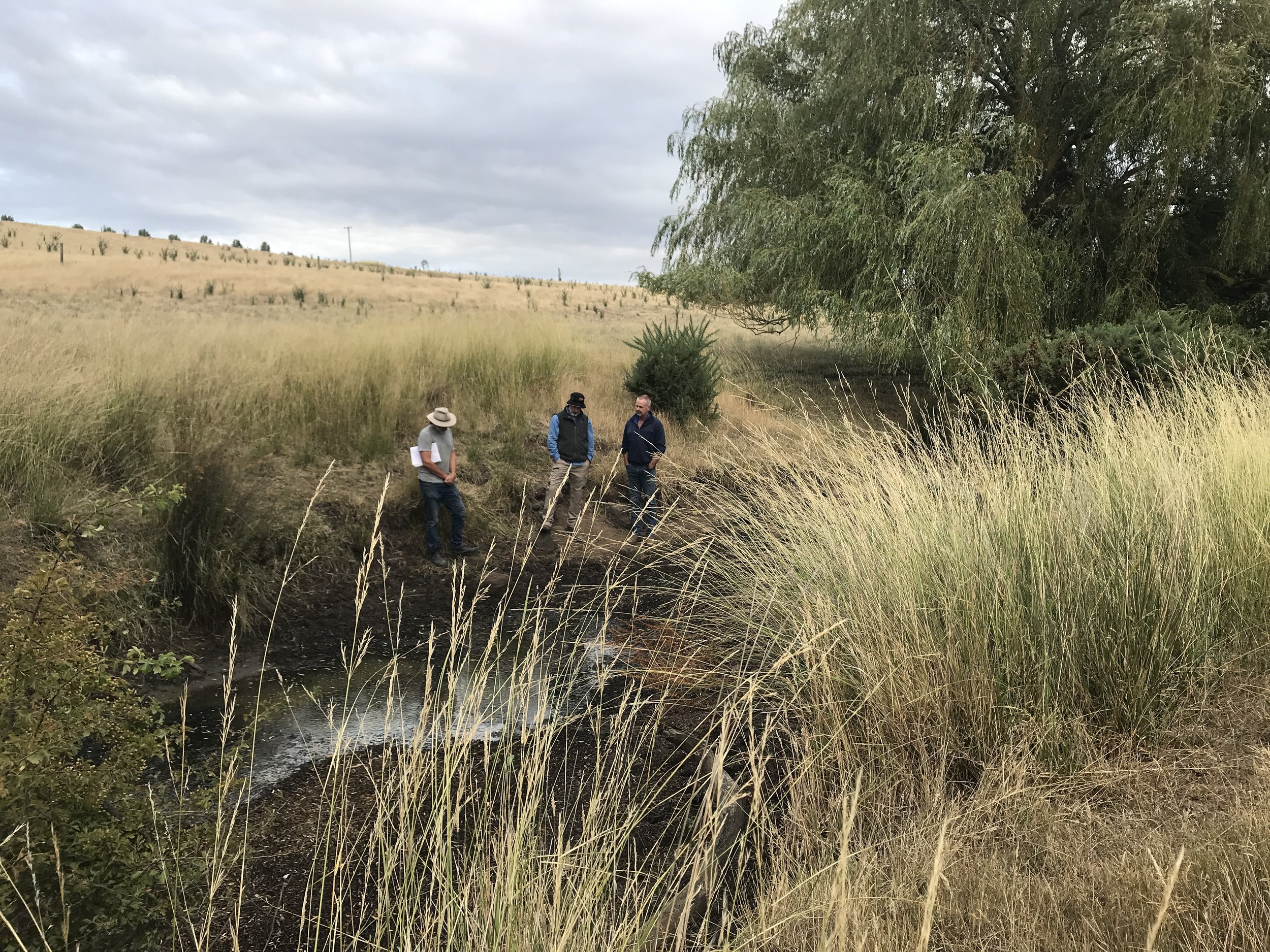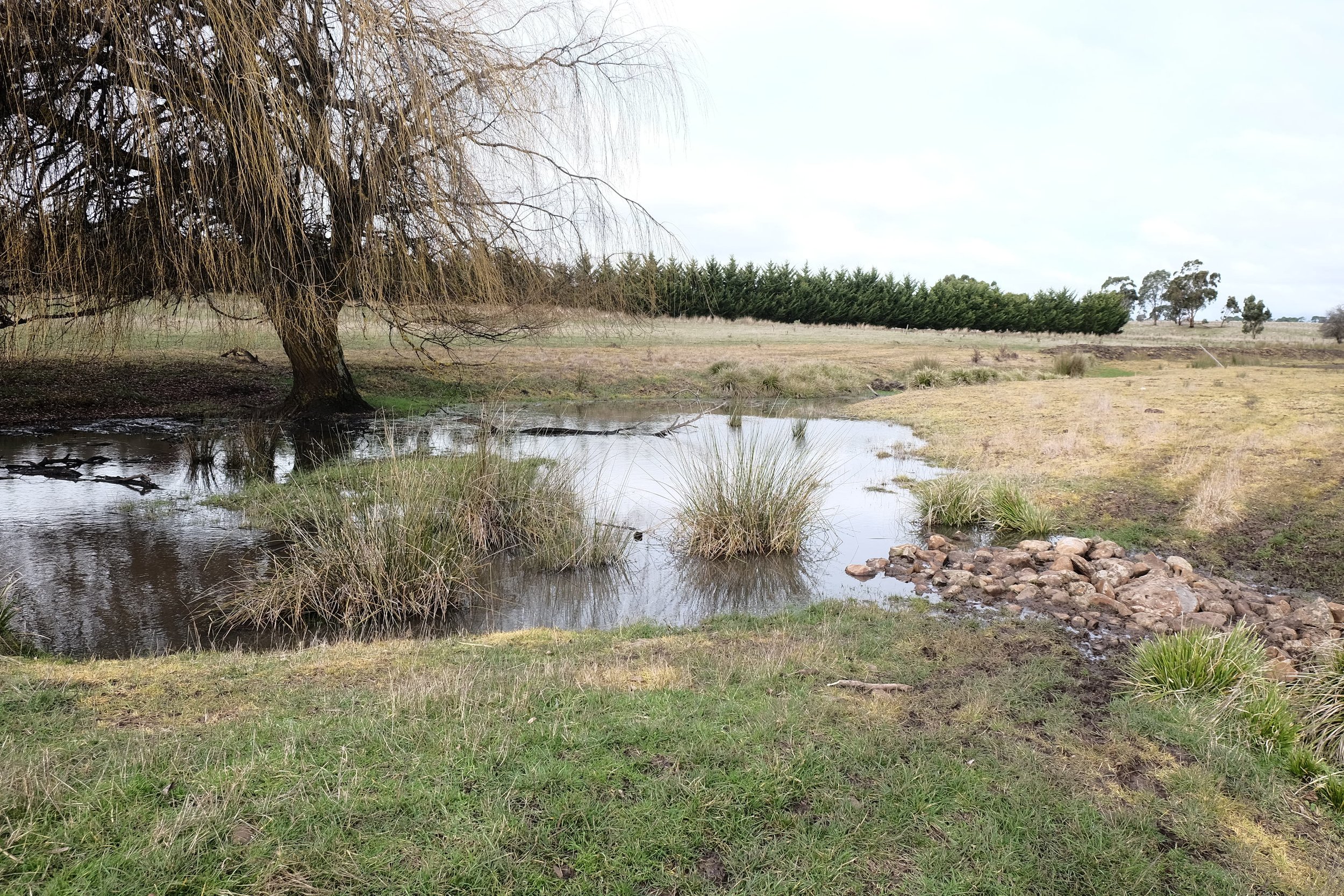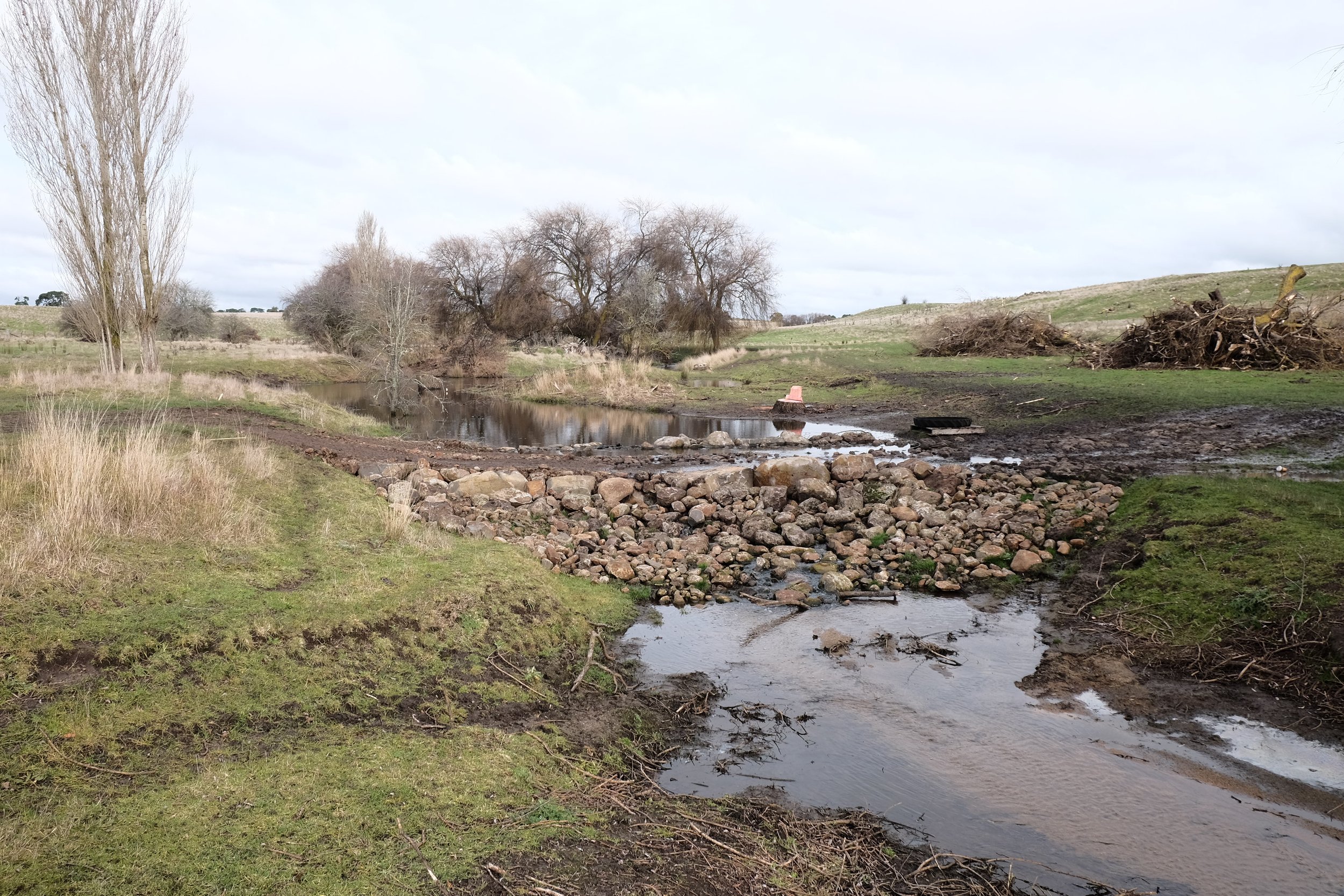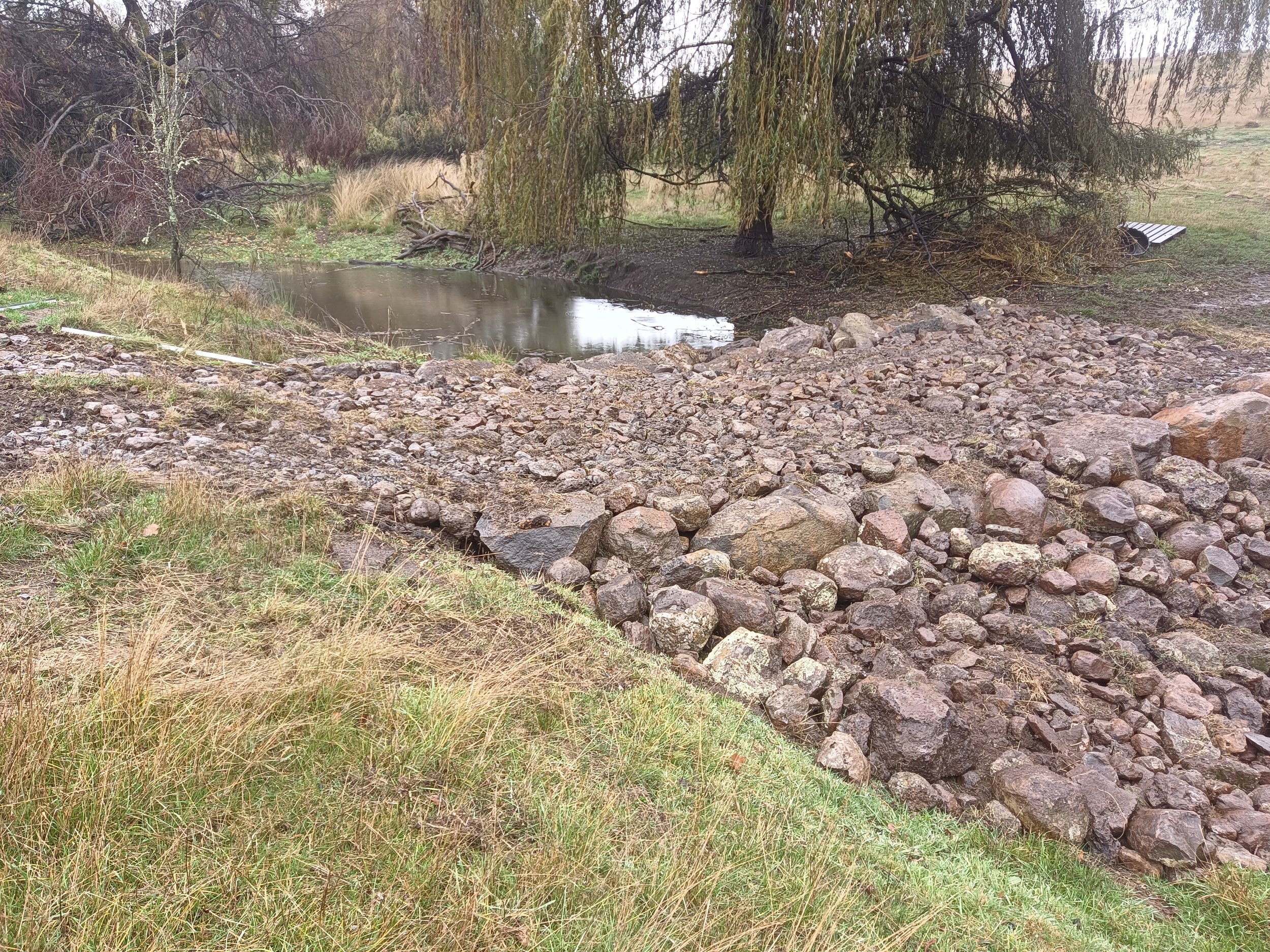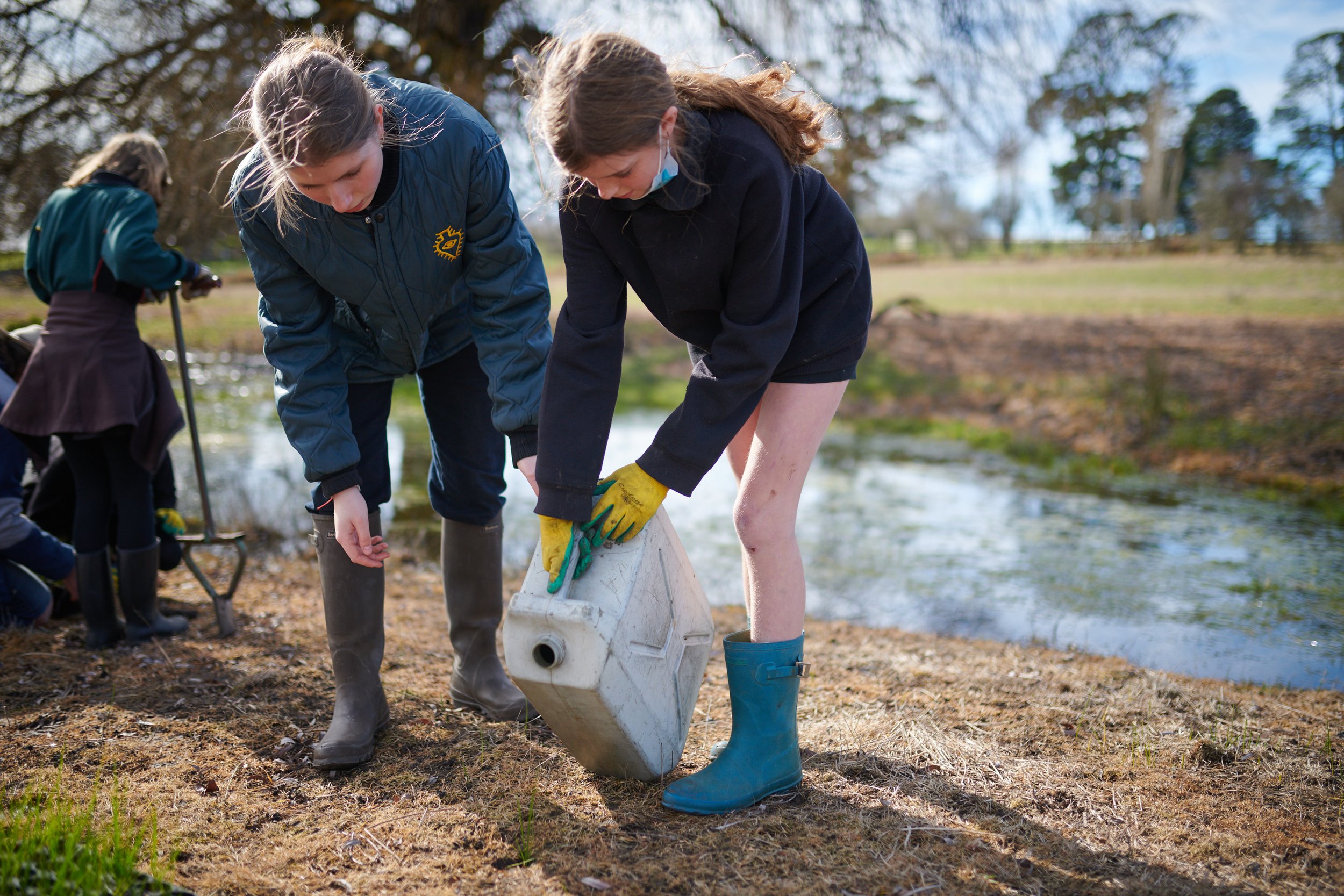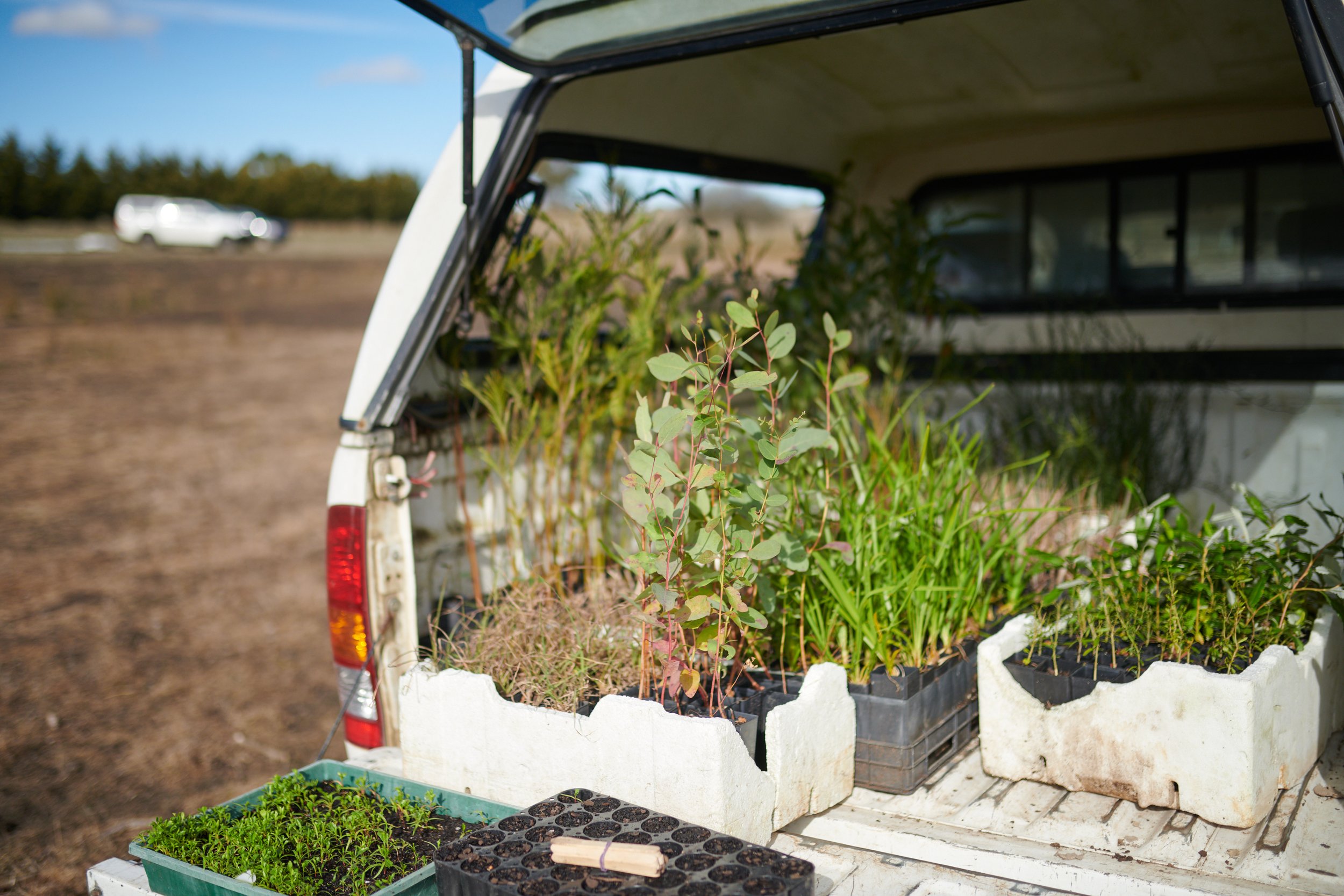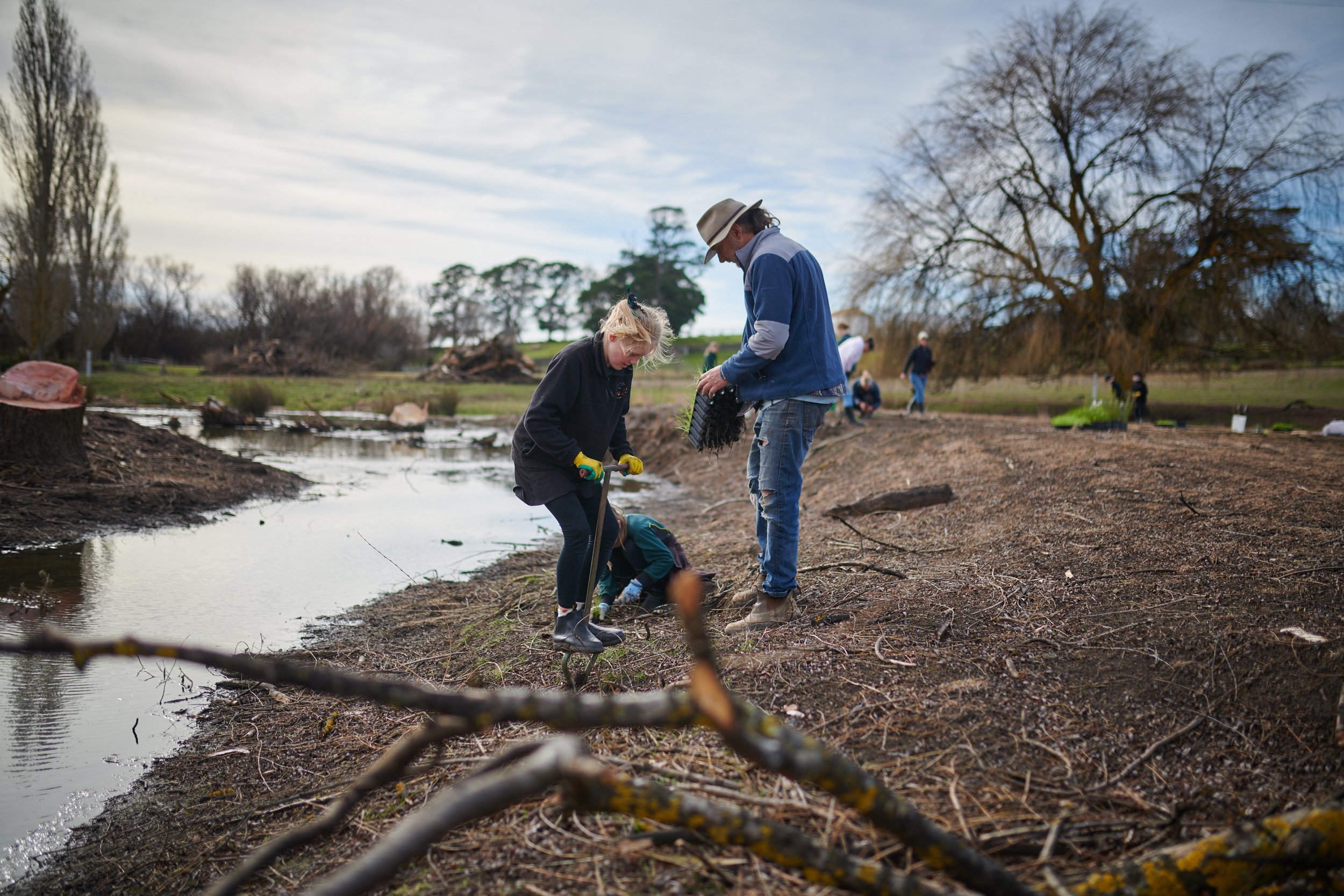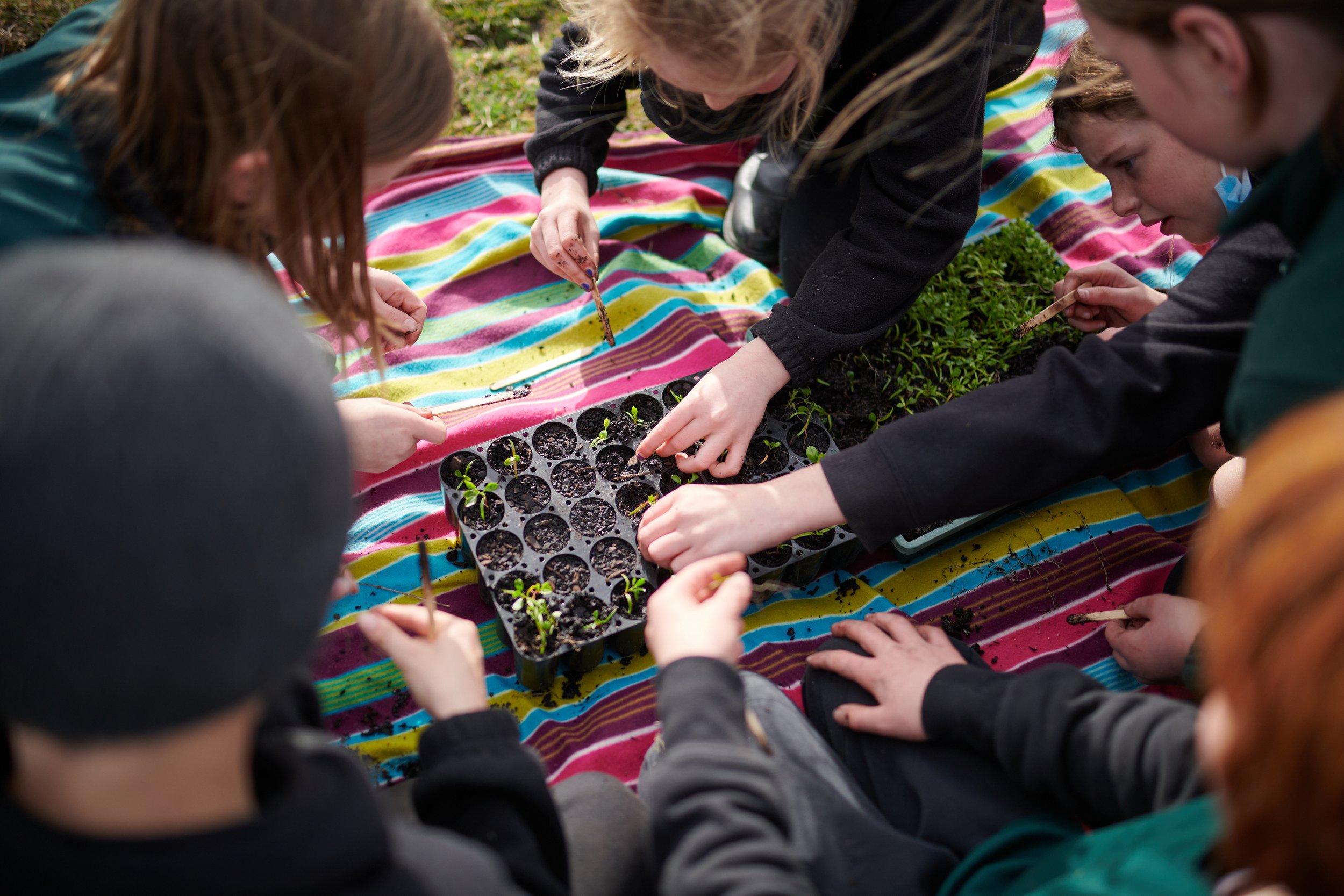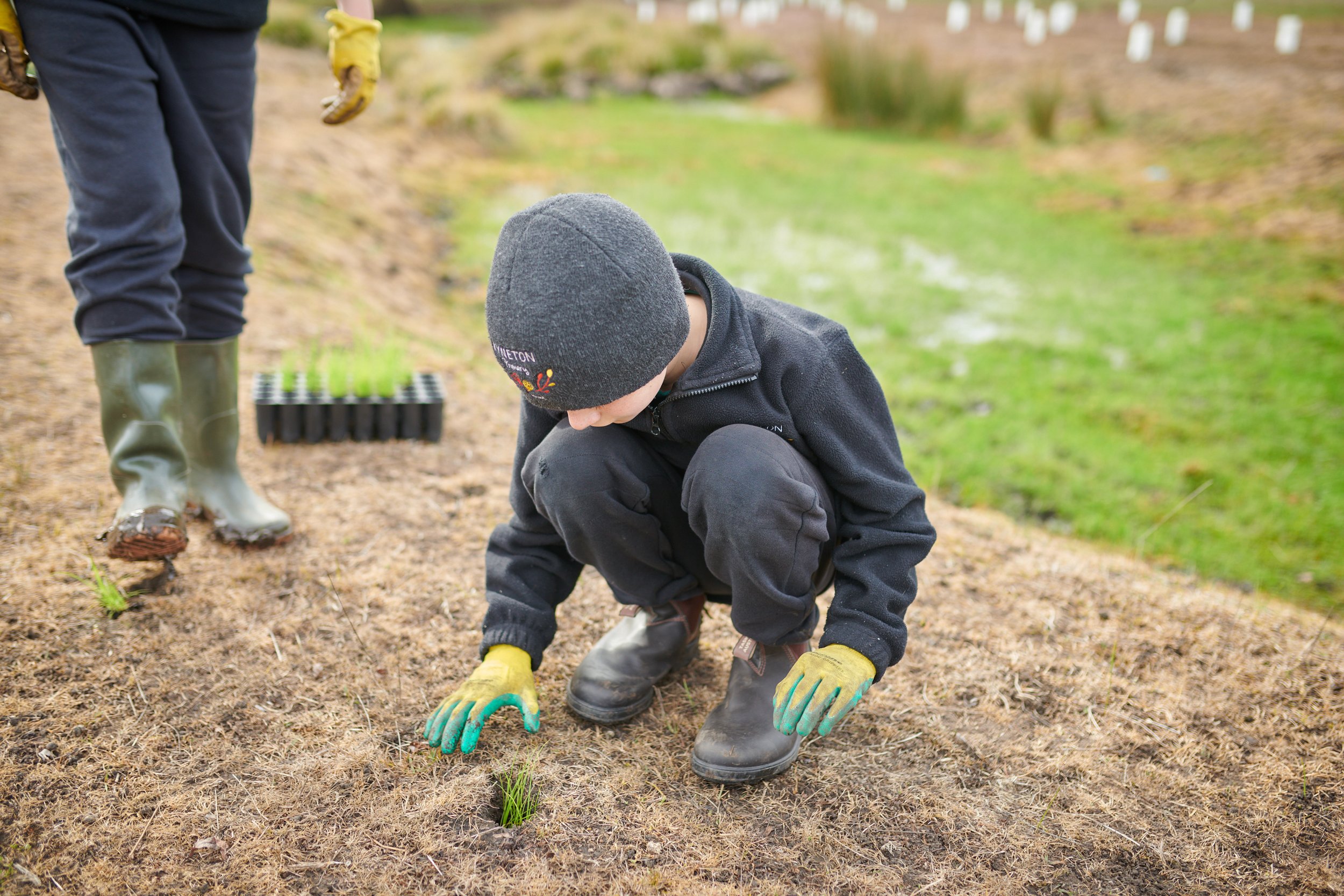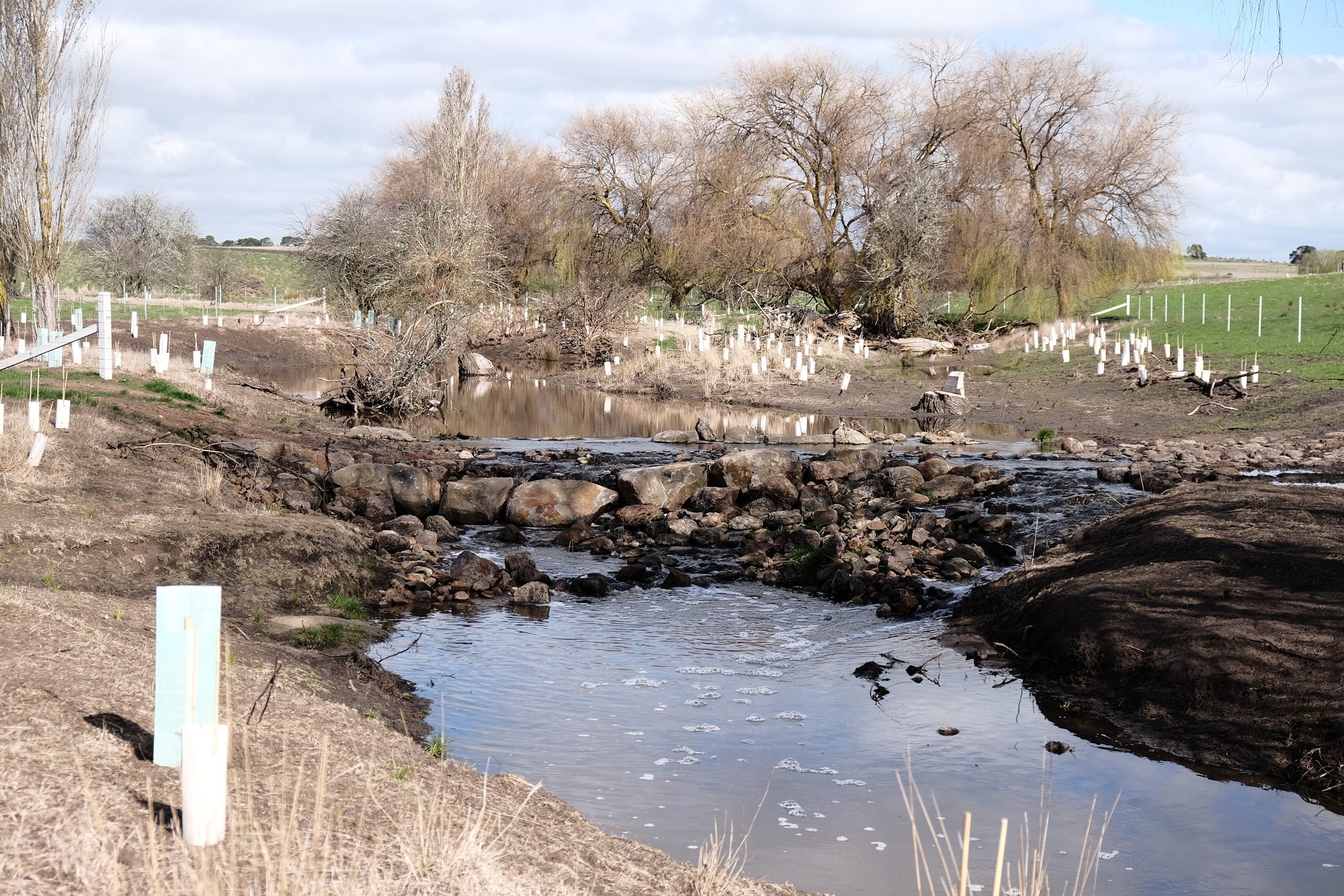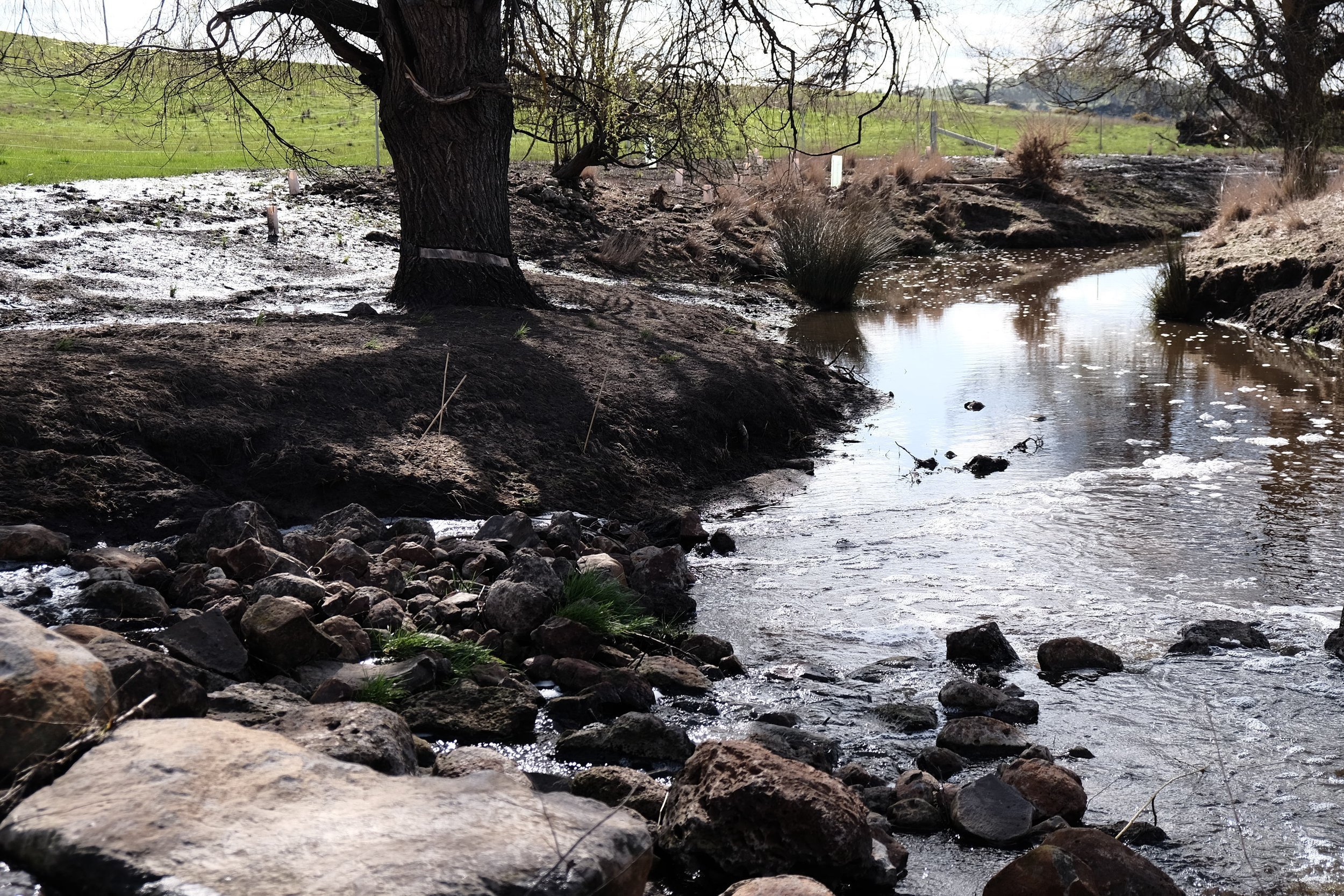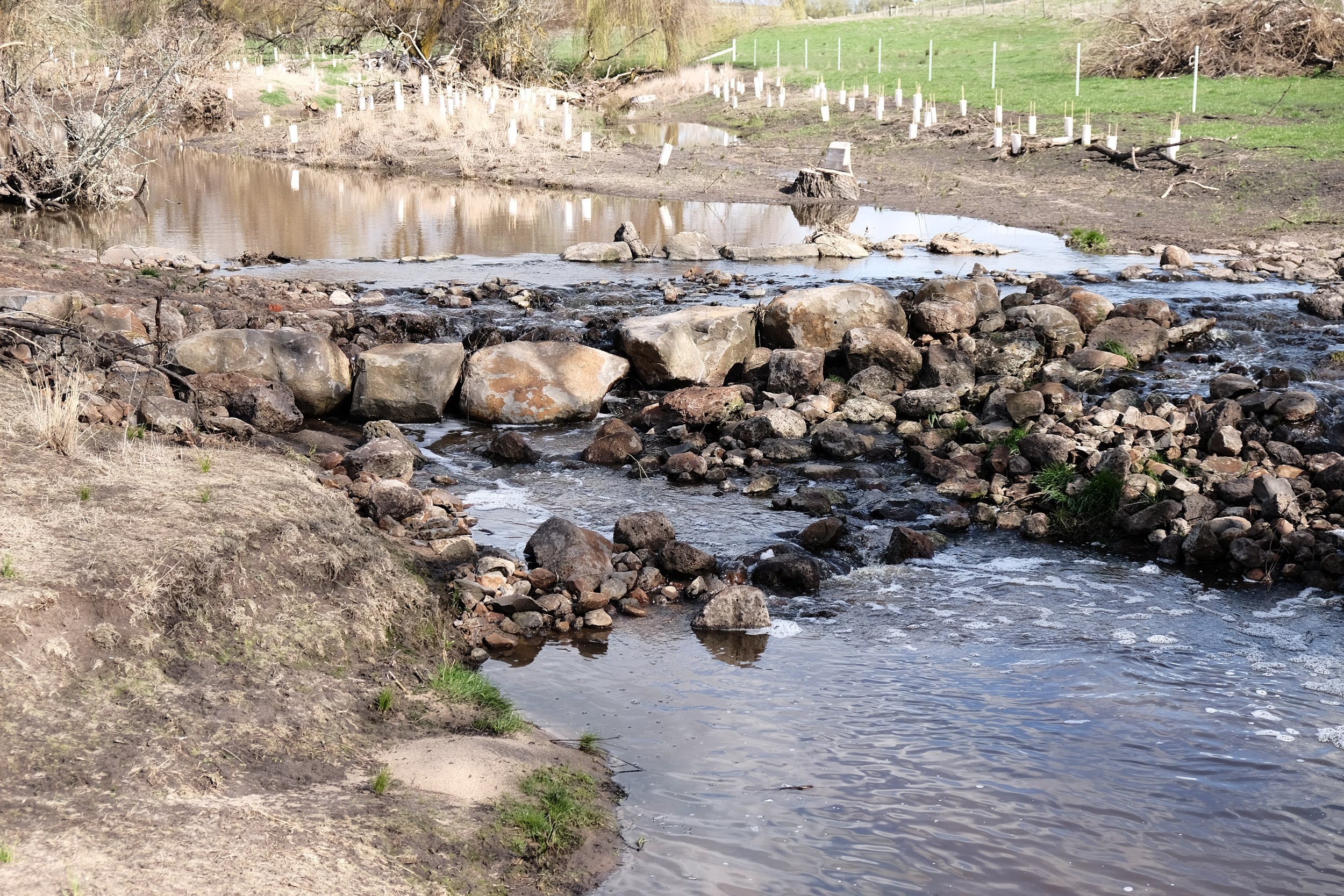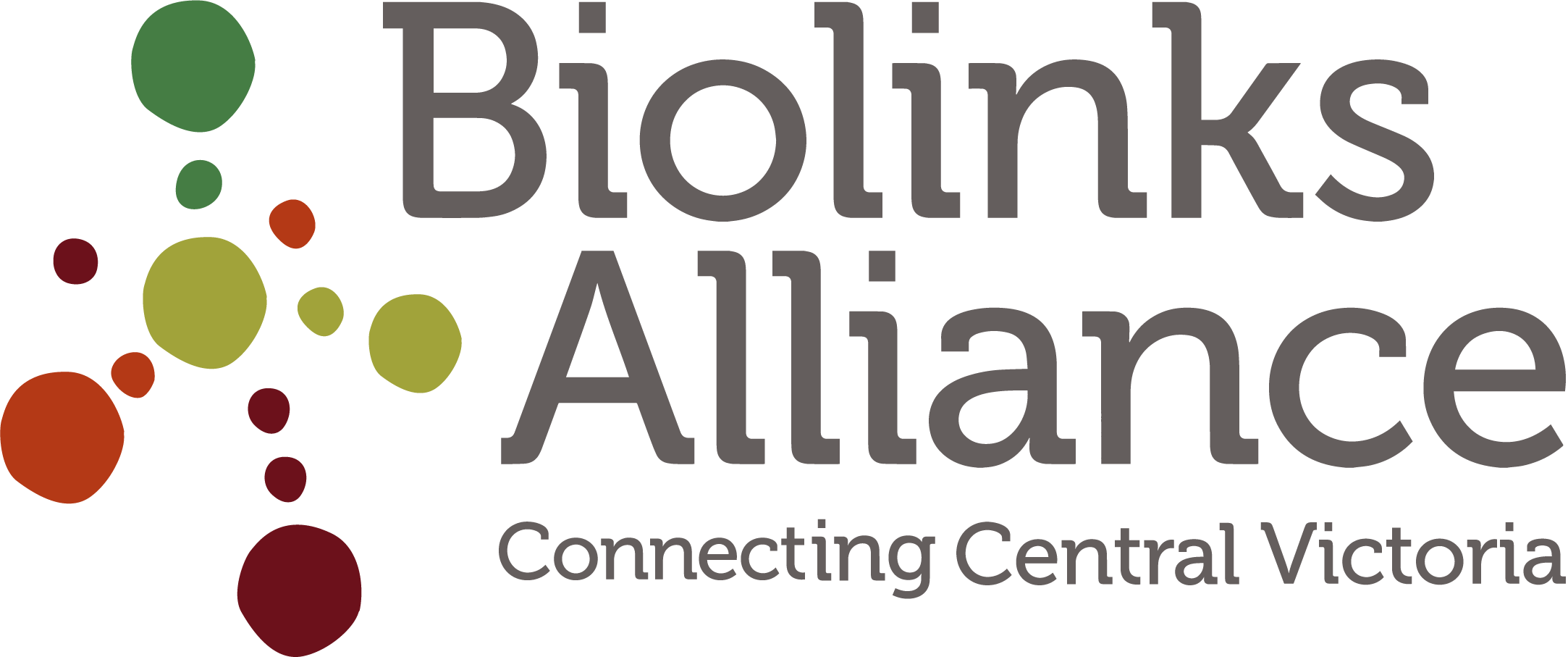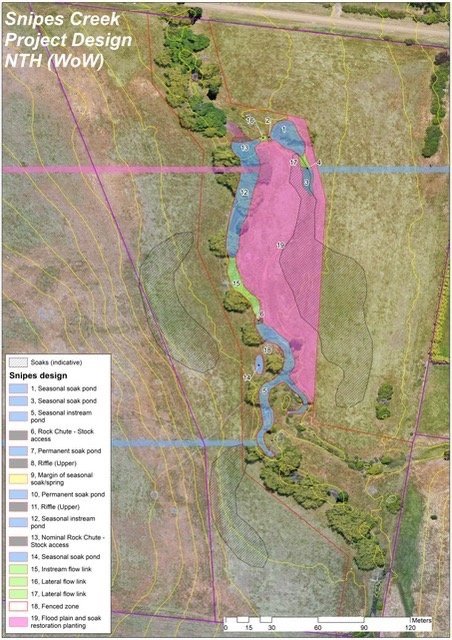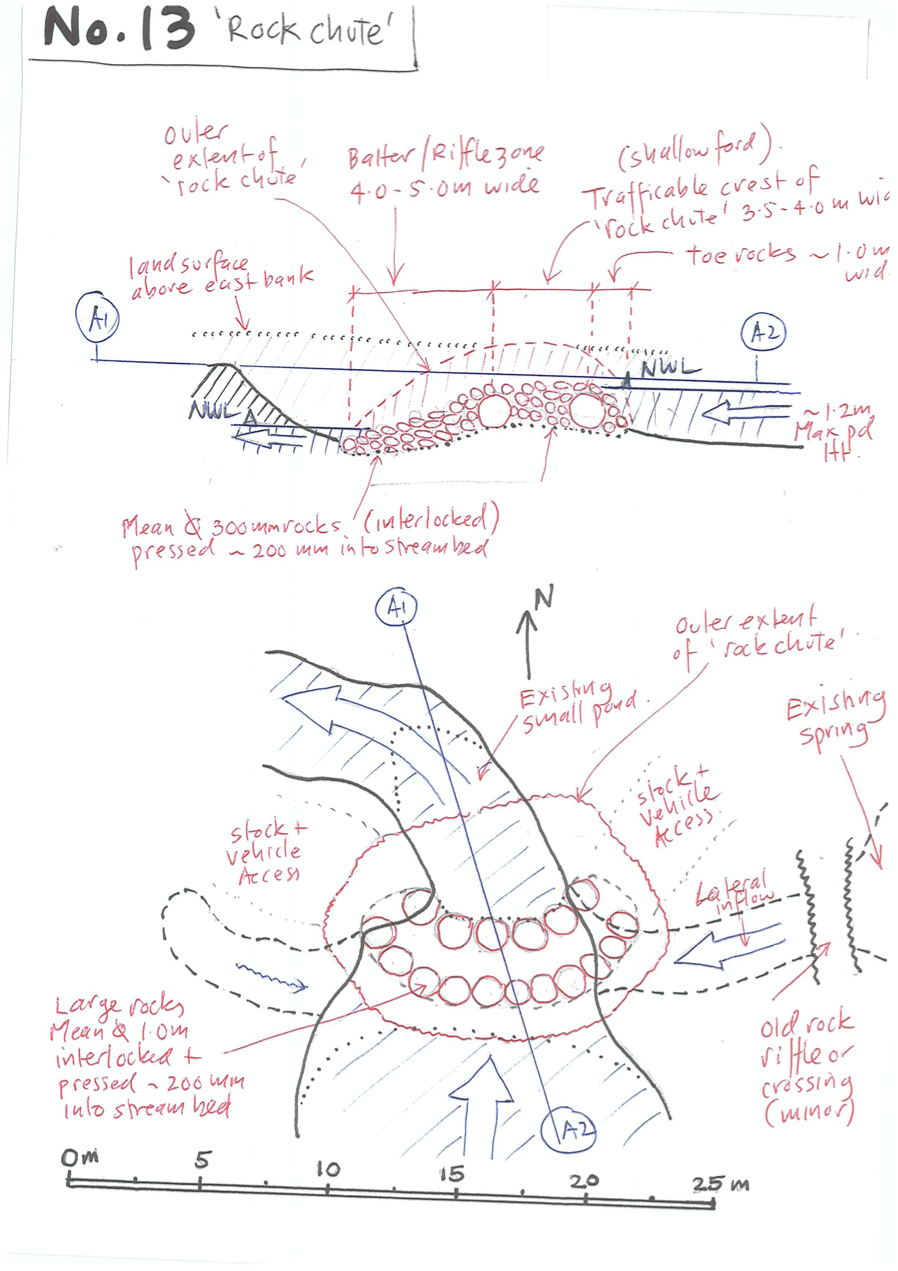Local 2 Landscape
Snipes Creek inaugural planting day with Kyneton Primary School’s Sustainability group photo: Holly Craig
Snipes Creek Rehabilitation Project
Part of the Greenhill to Black Hill Biolink
First planting day photo: Holly Craig
Biolinks Alliance with local landholders are working on the rehabilitation of Snipes Creek a tributary of the Campaspe River that has suffered from years of waste water contamination and degradation.
The project aims to repair the creeks natural hydrology, ecology and biodiversity; to improve water quality for the whole terrestrial system.
The plan was developed in consultation with a field of biodiversity, water ecology and engineering experts. Over the last year the rehabilitation works along the one kilometre section of the creek have really been taking shape.
“Firstly, let me say I was completely gobsmacked by what you have achieved on Snipe’s Creek. And all of that in such a short time. I knew the outcome would be good but you have far exceeded my wildest dreams, so thank you and please keep up the outstanding work. You have rekindled my enthusiasm for trying to make a difference for the benefit of the environment .”
Drone footage stretch of Snipes for works with zoned overlays
Detailed mapping created by our ecologist Paul Foreman post consultations with water specialists inclusive of an engineer, surface water experts, Damien Cook wetland ecologist, landholders and a Traditional Owner representative.
Rock Chute Mud Maps
Fords, crossings and riffle systems are all called rock chutes. They are designed to enhance the creeks natural morphology, hydrology and assist in the establishment of leaky weirs. These weirs will be filled with aquatic plants, creating a natural filtering system and greater biodiversity.
Examples of the construction process below. The double rock foundation in the first image is the beginning of a ford/stock crossing. The last image is an example of a riffle system.
Paul Foreman BA Ecologist breaking ground - photo Holly Craig
The active on-ground works occuring are:
Woody weed management and removal. Primarily willow gorse and hawthorn (ongoing).
Noxious weed management (ongoing) texas needle grass and other exotic grasses.
Stock exclusion - fencing.
Construction of rock chutes creating leaky weir systems and a stock crossing ford.
Planting of seasonal soak areas with: sedges and grasses inclusive of: Carex appressa and tereticaulis, Poa labillardieri, Lomandra Llongifolia, Callistemon sieberi
Planting of riparian trees and shrubs inclusive of: Acacia dealbata: Silver Wattle, Banksia marginata: Silver Banksia, Eucalytus ovata: Swamp Gum, Eucalyptus camaldulensis: River Red Gum, Leptospermum lanigerum : Woolly tea-tree
Aquatic species planting which will take place in October 2022 (weather permitting) will consist of : Schonenoplectus tabernaemontani: a soft stem bulrush, Alisma plantago-aquatica: a common water plantain, Persicaria decipens: slender knot weed, Myriophyllum crispatum: a perennial aquatic marsh herb amongst many more.
Baseline Water Assessment - Aquatic Invertebrates
We are lucky to have two distinguished water experts in David Tiller and Leon Metzeling volunteering their time and expertise with the initial water health assessments. The first assessment took place in December of 2021 and focused on the invertebrate community structure, using the Waterwatch collection approach and EPA’s Rapid Bioassessment method.
The results for all three indices indicated that both sites are in a moderately poor condition. The positive signs are that some pollution sensitive taxa were present at both sites.
Limited water quality sampling was also undertaken at both sites. The indicators measured showed relatively good water quality at the time of sampling. Dissolved oxygen at site 1 was of concern at 47% saturation, however, it is not at a critical level known to be harmful to aquatic life.Reactive phosphorus at site 2 is also higher than would be expected, especially when the concentration at site one was very low.
This monitoring is an invaluable tool to assist us in understanding how the works have impacted the water quality over time. The next assessment will occur in late Spring.
FUTURE PLANS
These rehabilitation works are only the first stage in this creek’s rehabilitation. Biolinks plans to extend the works in both directions, involving multiple landholders and further enhancing the Greenhill to Black Hill Biolink.
Being a not for profit - non government organisation allows us to act as an independent body but it does put us under financial strain. We rely on philanthropy, grants, active landholder involvement and a large multi talented support base that we regularly call upon for assistance and expert advice.
Please consider supporting our invaluable work (with a difference) via the current fundraiser Treasures of this Land or through our ongoing philanthropic options. Of which there are many levels and ways you can participate. Check this page
““With the help of Biolinks Alliance we have installed leaky weirs to slow down the flow of water and create pools, we have fenced the creek off from livestock and have started to re-establish the aquatic and creek line vegetation, which is all designed to filter and clean the water before it reaches the Campaspe River.”Kim hopes the project can demonstrate a way to repair the whole creek but he stresses that it will need to be in conjunction with ensuring no more wastewater is released into it.”
Snipes Creek images from the past year 18 months.
